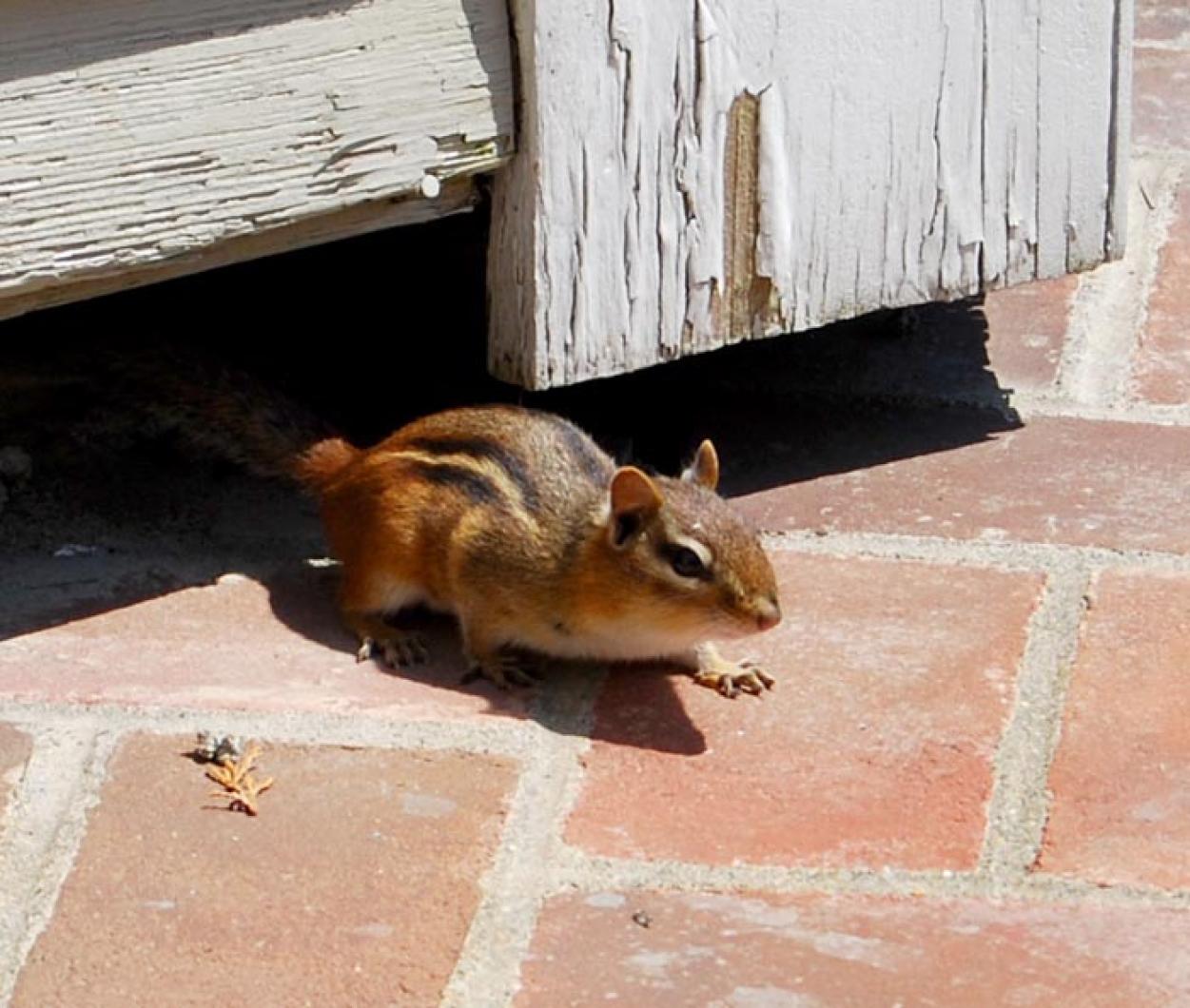To live in Christiantown is to abide by the laws, quirks and schedules of hundreds of other animals that share these primeval woods. If you are not a naturalist and a natural philosopher when you first move here, you will become one through regular contact with furry, scaly, fanged and feathered neighbors.
One can’t live in Christiantown without feeling distinctly like a short-term tenant. Here among the towering oaks and beeches, sassafras and hollies, nature reminds us that home ownership is forever subject to negotiation, and that our eventual eviction is probably only a matter of time.
Creatures here make no bones about trying to become our roommates regardless of the season. On cold winter nights, all talk comes to a standstill and human eyes turn to the ceiling as little deer-mouse feet skitter through the rafters. In two different years, in spring, one of our north-facing dormers has been occupied by honeybees swarming from a local farm. In fall, the basement vibrates with cricket song long after the garden and meadows have gone silent.
Summer wasps once began constructing a large and spooky-looking paper castle for themselves, attached to our Indian Hill Press sign. By the time we noticed the project, it seemed a shame to undo all their hard work. We tiptoed in and out of the studio for the rest of the season till frost sent the wasps away, then we removed and donated their creation to Sandy Bernat, who does remarkably similar work at Seastone Papers up the road.
Christiantown dwellers don’t need calendars. We can tell the date, almost to the day, by glancing out the window. Hummingbirds arrive every year around April 21. Around June 6, a mother snapping turtle comes out of the woods, digs a hole in a sunny spot and lays a clutch of eggs. Around Sept. 6, those eggs hatch and dozens of baby turtles fan out across our driveway in search of Mom. We dutifully collect the babies in a Vlasic pickle jar, and deposit them in the bog for what we imagine will be a joyous testudine family reunion.
When there is a natural disaster, repercussions are profound. In August 1991, for several days after Hurricane Bob, Christiantown Road couldn’t be found at all. So many black oaks had toppled, their cores chewed hollow by ants and termites, that the road was a six-foot thicket of leaves and fallen branches. The air was syrupy with oak sap, and yellowjackets flew around in a foul mood. A month later, in September, we watched in amazement as — an almost blasphemous violation of nature’s clock! — lilacs bloomed.
Televised entertainment is superfluous in Christiantown. Nature provides quite enough drama. Squirrels cavort, court and cavil. Chipmunks out-Disney every cartoon ever made. Birds mate, bicker, bathe, and occasionally make us sad by committing suicide against a windowpane.
In a town made famous by Nancy Luce and her chickens we feel somewhat honored when, suddenly and without warning, half a dozen domestic chickens come charging out of the woods into our yard. Occasionally they leave fresh-laid eggs in the grass. More exotic were the iridescent blue peacocks that once wandered a quarter-mile through the woods to peer through the glass door of the studio as we ran the presses. However, their habit of snacking on unopened peony buds quickly made these birds less than welcome.
Through the anthropomorphic lens of Christiantown, Nature presents a parade of human traits. When rudeness appears, it is most often among similar animals: squirrels shove chipmunks away from food, sapsuckers make ugly beak-faces at northern flickers. Similarly, it’s hard not to be moved by some creature’s happy moment: the hearty song of pinkletinks in May, or the exuberant splashing of a catbird in fresh water on a hot July day.
We live simply and work hard in Christiantown, and so do other creatures. After awhile, it’s difficult to think of ways in which we’re so very different. Like the squirrels, we spend summer gathering and storing winter’s sustenance. We watch for high-living summer visitors — sugar-sipping hummingbirds, orange-munching orioles — who are here only for the good times. We love our year-round companions, commonplace as they may be — chickadees and nuthatches and even skunks — because they’re faithful and unpretentious and content with sunflower seeds and suet.
People sometimes speak of the spiritual aura of the Christiantown woods, vortices of creative energy, spirits of long-dead Indians in the burial ground up the hill. That’s just a small, human understanding of something far beyond humanity. A much greater share of the story belongs to our neighbors the raccoon, the screech owl, and the lovely gray-skinned mole that is so hard to think of as a pest. Perhaps one day, once we’ve lived here long enough to earn their trust, they’ll share their secrets.
Dan Waters and his husband, Hal Garneau, built their house in Christiantown in West Tisbury in 1984. Soon afterwards they founded the Indian Hill Press, whose greeting cards and prints are produced on antiquated but fully functional machines (indianhillpress.com).






Comments (1)
Comments
Comment policy »